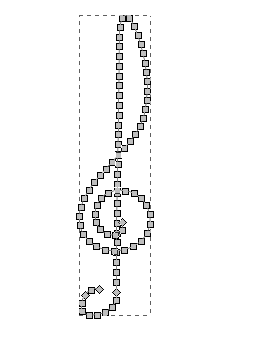

- INKSCAPE GCODE MAKELANGELO HOW TO
- INKSCAPE GCODE MAKELANGELO SERIAL
- INKSCAPE GCODE MAKELANGELO SOFTWARE
- INKSCAPE GCODE MAKELANGELO CODE
INKSCAPE GCODE MAKELANGELO SERIAL
Print machine axis limits to the serial connection.Ĭhange the next expected line number to number.
INKSCAPE GCODE MAKELANGELO SOFTWARE
Print help message to the serial connection.Ĭhange software limits for axis to max/top and minimum/bottom. List files on SD card (if any) to the serial connection.Ĭhange digital pin number to state (0 for low voltage, 1 for high voltage) They will not resist being moved and will ignore commands. They will actively resist being moved and will obey commands.ĭisengage (turn off) all motors. Every correctly parsed command with a line number will increment the expected line number. Where is some number >= 0 and checksum is a non-printable character (the XOR sum of all previous characters in the command, not including line number and semi-colon ‘ ’ ). Commands can be preceeded by a line number: N command This gives you room to add comments inside a list of gcode commands. Blank lines are ignored.Īny text after a is ignored. Command structureĪll commands are on separate lines (one command per line). Wherever possible we have tried to match the format. For a more complete reference, please visit. Gcode commands should be common to most CNC machines and follow the same format as 3D printers, mills, lathes, and others. Please use this guide to create your own gcode generator, to understand the gcode created by Makelangelo software, or to build machines that comply with the format. After that feel free to experiment with PLA or any of the other exciting new flavors on the market.Here is a comprehensive list of all the gcode understood by the Makelangelo firmware. It is better to start with a plastic like ABS which you can't overheat. You can push too slow and it will drip out the hot end, which is bad. You can push plastic into the hot end too fast and it will jam. You've learned your letters and words, now we can start to share Big Ideas. Movement is the same, but more complicated. If you've built a Makelangelo before, you've seen the rest. You will avoid a lot of mysterious calibration problems if you halve the speed and acceleration at the start. In my experience with a new machine these default settings for extruding and z movement are WAY TOO HIGH. These settings include velocity, acceleration, and jerk. Marlin has some default speed settings for each motors - moving and extruding.
INKSCAPE GCODE MAKELANGELO CODE
To program your robot you need to use Arduino to upload printer control code like Marlin. I have everything except the metal rods and the glass for sale, because they are hard to ship.
INKSCAPE GCODE MAKELANGELO HOW TO
Comment if you have an idea how to reuse them. The zipties are the only thing that might go in the garbage. The servo will be good in another robot project.

The wood parts from the Makelangelo can be composted. To make them work you have to "bridge" two pins with a wire, as shown in the second picture. I've included a photo of the power supply I used in all my printers. Even better, these parts are tested to work well together. Many places online now will sell a Hot End Kit that has a few of the parts on your shopping list all in one place. Get one for each piece of glass and then you can swap quickly between prints. I have tried many other surface covers and this is the best. On the glass plate I like to put a sheet of Buildtak. Your local glazier can cut glass plates to any size you want. I only need the tiniest piece of kapton tape (polyimid tape). They will cut it to length and deburr the ends if you ask. In north america I recommend for the metal rods. The belts, pulleys, screws, nuts, and the two Z stepper motors can come from the Makelangelo 3. The Arduino MEGA, the RAMPS board, and the stepsticks can be replaced with the Makelangelo RUMBA board and the LCD. Here is a complete list of parts you may need to buy. Your local hackspace probably has a laser cutter.

I cut my parts from 6mm Baltic birch pine on a 60w laser. I printed the parts for this machine on my first printer.


 0 kommentar(er)
0 kommentar(er)
